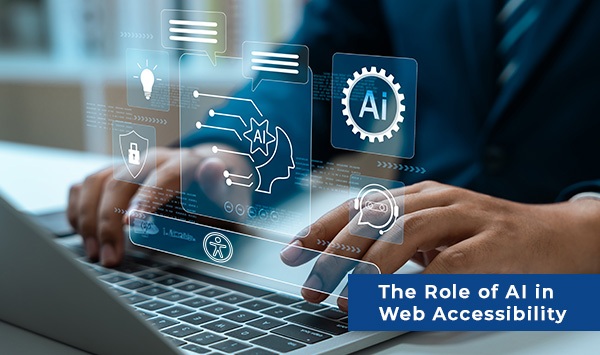Ensuring equal access to online content has become a top priority as the digital world keeps growing. By moving far beyond simple automation, artificial intelligence (AI) is revolutionizing web accessibility. AI-driven developments, such as adaptable user interfaces and intelligent screen readers, are assisting in the development of more inclusive online experiences for individuals with impairments.
In addition to streamlining accessibility initiatives, this developing technology creates new opportunities for individualized, human-centered design. In this article, learn in detail about how AI in web accessibility works.
What Accessibility Means in the Real World?
Before diving into AI, it’s important to remember what we’re solving for.
Accessibility is about ensuring that everyone, regardless of ability, can navigate and interact with your digital content. That includes:
- A student who’s blind using a screen reader to read course materials.
- A customer with dyslexia trying to fill out a service form.
- A senior using voice navigation because typing is difficult.
- A person with difficulty using mouse, using keyboard navigation.
When websites or digital tools aren’t designed with inclusivity in mind, these users get locked out of basic access – and businesses miss out on a loyal audience.
Where AI Comes Into Play?
AI’s role in accessibility is growing, but it’s not a silver bullet. It’s a supportive tool – not a full replacement for human-centered design or certified audits.
Here’s how businesses are using AI to enhance accessibility:
1. Automated Alt Text Generation
AI can now “look” at an image and suggest a caption or description. This helps make content accessible to users with visual impairments, especially in content-heavy websites or e-commerce platforms.
Value for Business: Time-saving for content teams and improved experience for visually impaired users.
2. Real-Time Captioning and Translation
AI-powered tools like speech-to-text engines can provide live captions for webinars, videos, and events. Some go a step further and translate captions into different languages.
Value for Business: Expands reach to global, multilingual, and hard-of-hearing audiences without hiring multiple specialists.
3. Personalization for Cognitive and Neurological Needs
Some AI models can adapt text complexity, offer content summarization, or allow distraction-free reading modes, helping users with ADHD, dyslexia, or cognitive impairments.
Value for Business: Enhances usability for an often-overlooked customer segment.
4. Automated Testing and Issue Detection
AI tools scan websites for common accessibility violations—missing alt tags, improper headings, or non-functional buttons. Some even provide suggestions for fixing them.
Value for Business: Speeds up compliance monitoring, reduces manual QA cycles, and improves time to remediation.
But Let’s Be Real—AI Has Its Limits
While AI provides efficiency, it cannot replace human judgment, especially when empathy and context are involved.
- An AI might describe a decorative image as “a group of people,” but a human knows it’s a team-building moment on a company’s values page.
- Auto-captioning can misinterpret accents or industry jargon, leading to embarrassing or confusing subtitles.
- Automated tools might “miss” legal compliance requirements or create a false sense of being accessible.
The key takeaway? AI works best when paired with certified human review.
How Businesses Can Use AI Responsibly in Accessibility?
If you’re considering incorporating AI into your accessibility strategy, here’s how to do it right:
1. Use AI for Scale, Not Strategy: Let it assist with repetitive tasks—image tagging, content checks—but rely on expert teams for interpretation and deeper fixes.
2. Prioritize Human Oversight: Bring in accessibility specialists to evaluate and verify AI-generated fixes. Certifications like DHS Section 508 Trusted Tester matter here.
3. Focus on Long-Term Value, Not Short-Term Fixes: Accessibility is not a one-time project. AI can be part of your workflow, but it should align with inclusive design principles from day one.
4. Invest in Staff Training: Educate your design, development, and content teams about accessibility fundamentals. AI is only as good as the people using it.
Final Thought: The Business Case for AI in Accessibility
Yes, AI makes accessibility more scalable and manageable. But the real value comes when it’s used as a bridge, not a bandage. By combining the power of automation with the precision of human insight, businesses can achieve digital experiences that are not just compliant but truly inclusive.
That’s how you win more customers, build stronger brand trust, and future-proof your digital presence. You can quickly scan your website with the checker tool to understand the issues, or contact us for a free consultation.





